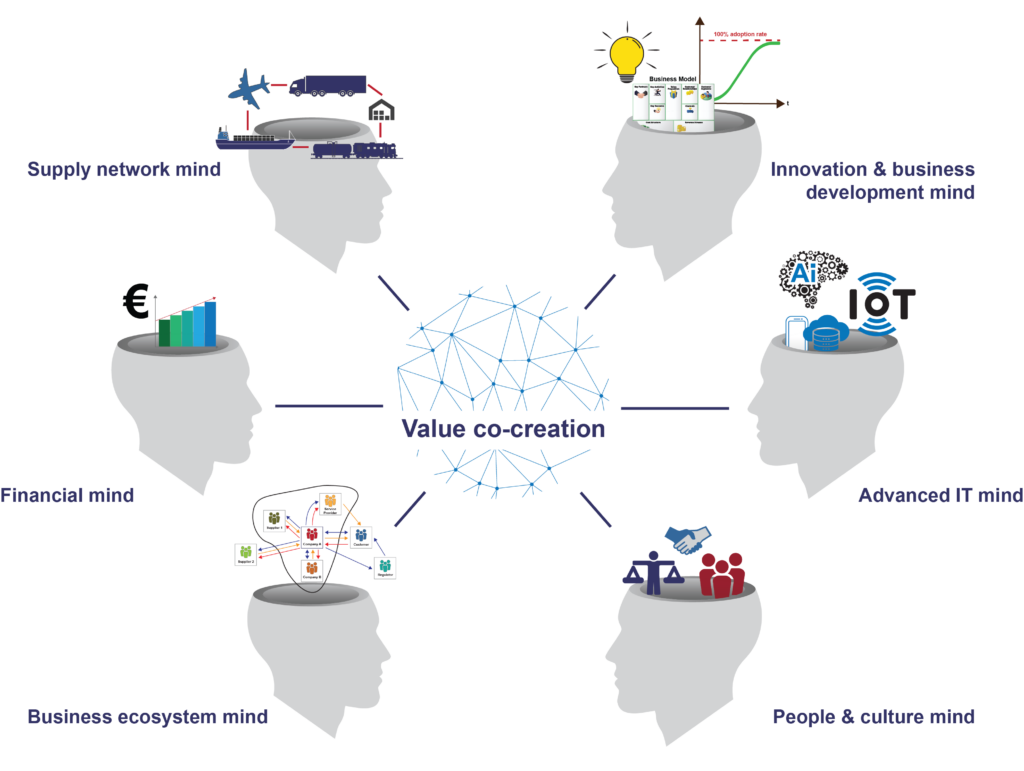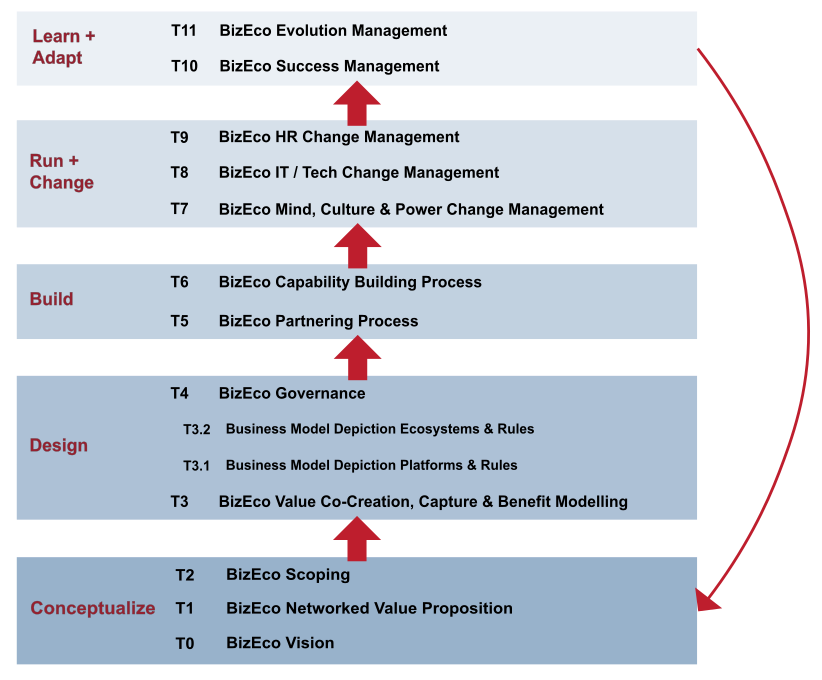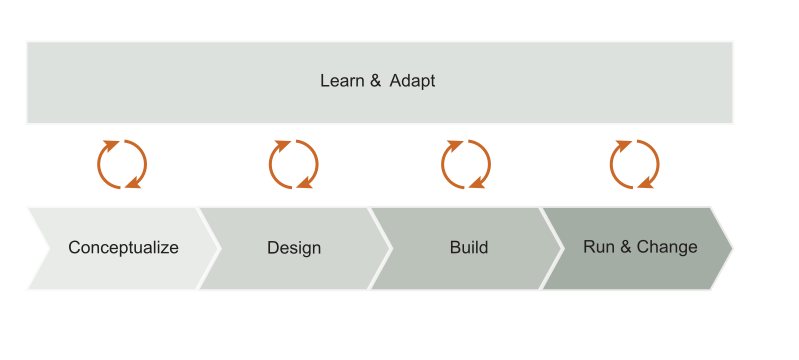Close collaboration
We collaborate closely with our clients to co-create new and/or higher value.
Open method-based approach
Thinking and acting in proven multi-dimensional frameworks that are diligently adapted to new and changing contexts:
End-to-End
We aspire together, design, implement and measure the achieved results.
Holistic
Digital transformation aware support of business ecosystem changes reaching from innovation to execution, learning and towards improvement. We apply both systems and design thinking.
We believe in pragmatism, attention to detail and leveraging co-creation with our clients.
Value co-creation minds & impact diagrams
We combine multiple perspectives (minds) to craft a robust, sustainable, interoperable and value-creating business ecosystem that matches context and vision. The minds help to devise complete processes for the governance, life cycle and performance between the business ecosystem partners.

Hydrogen business ecosystem example
We apply an end-to-end perspective to transform to new green hydrogen business ecosystems. The holistic perspective through standardization, interoperability and data leverage helps in securing the highest benefits to committed business ecosystem partners.

Extended business ecosystem modelling method
The methodical building blocks and the generic procedure, with practice proven techniques and tools that we have developed over the last 25 years enable our clients to navigate through the physical, digital and hybrid business models and their implementation covering the following five logical levels:

Business Ecosystem method procedure model:

Typical design flow of a Business Ecosystem:
- The conceptualization starts with the definition of the vision, purpose, networked value proposition and scope to align what the envisioned outcome will be.
- The design phase combines an aligned business model, the partner governance rules (incl. conflict management) and processes as well as the distribution mechanism of future benefits.
We support the building of the governance and the operative processes, organizational bodies, capabilities, assets, IT infrastructure and data exchange where needed in order to bring the BE into operations. - People, IT and assets need to be prepared before the commencement of operations. Establishing an exception and prevention management is a key activity to increase responsiveness and resilience. To be ready, sense exceptions and include prevention mechanisms.
- During operations, quick adaptations are always required for robust performance.
- Learning, success management and further concerted evolution are vital phases that contribute to the viability and scaling of the business ecosystem.

